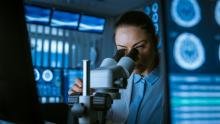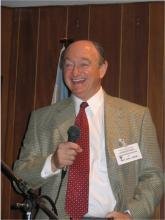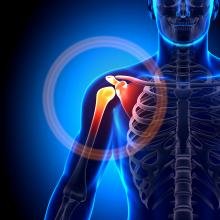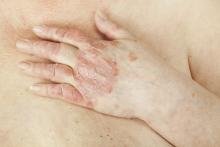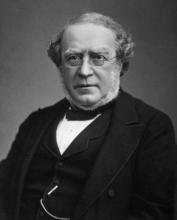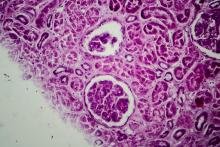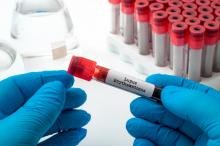“I have been living with rheumatoid arthritis for 13 years. I was diagnosed when I was 26” is the first thing Priscila Torres says about the process she has gone through and what has made her a leader among patients with rheumatic diseases. At that time, she was working as a nurse technician and, as she says, “I was used to dealing with pain, but the pain of the patients.” That is when she suddenly had to learn to deal with her own pain. “to become a patient was the hardest episode of my life”, she says.
Thirteen years ago, also began a “new story” for Gina Ochoa. She is a business administrator with an emphasis on human talent, marketing, sales, and project management; she became unemployed with a high-cost diagnosis and what she calls a “not very known disease” (Sjorgren’s Syndrome).
Tini Jordan’s case is not far off. She has had rheumatoid arthritis for over 40 years and was diagnosed in 1982. “My uncertainty was so much, that when they gave me the news, I didn’t know that it existed. My concern was so great that, after talking to other people and being advised by my rheumatologist, we decided to create the first group of patients with RA in the country”, she says.
And so, they all became patient leaders. They created foundations and began a process of empowerment, learning about different rheumatic diseases and giving voice and vote to diagnosed patients and their families. In addition to this, to serve as a bridge to existing government regulations and limitations. A task that is not for everyone, but that many decided to assume and walk the path that has now led them to a key point.
They had more in common than they imagined. This calling to become leaders led to a goal-built step by step and now it is a reality. A manifesto that expressed the needs of the patients and that was also supported by medical specialists.
The Pan-American Manifesto on Rheumatic Diseases was presented during the 2nd Pan American Congress of Patients with Rheumatic Diseases. A document that brings together all the needs and approaches from a different perspective than the medical and government ones.
Dr. Carlo Vinicio Caballero, Dr. Emilia Arrighi and Priscila Torres had the general direction. The general coordination was under the management of Dr. Ana Paula Leon and as representative of the group Juntos, Dr. Dora Pereira. The Committee of patient leaders was made up by Carmen Macias, Cecilia Rodriguez, Dr. Daniel Hernandez, Enma Pinzon, Fernando Rodriguez, Gina Ochoa, Jessica Knezevich, Maria Veronica Flores, Priscila Torres and Tini Jordan.
“This follows a whole line of work being carried out by PANLAR and the Juntos group to generate evidence on the priorities and needs of patients so that these can be taken into account in health policy decisions”, Dr. Arrighi, MSc PhD explains.
One of the tasks she developed was to highlight the needs of the patients and the idea emerged from this, “since we already have this scientific consensus, how could we also give voice to patients through a scientific methodology?”
“We have a geographic representation on one hand, almost all of the countries are represented. In addition to this, the people who will participate in this manifesto are specialists in their area, leaders of patient organizations who know the needs and the reality of their country”, she states.
Through her experience, Priscila Torres i sable to maintain that it is not only necessary to educate and inform chronic patients, “they need training for self-care and aside from this, they also need to participate in the decision-making in all aspects of their lives”, which is why this type of movement becomes fundamental in the development of new policies.
It has become an essential document for public policy agents, health professionals, researchers, and scientific societies, with the support of patient organizations, to improve the comprehensive care of people living with rheumatic Diseases in the Pan-American region.
The final document reads: “The MAPANER aims to be a living document, a call to action, so that these premises may be reflected in concrete strategies that directly benefit the care and attention of people living with rheumatic diseases, regardless of the country where they reside, their social class, educational status, or gender”.
Dr. Daniel Hernandez is the Medical Advocacy Liaison and directs the medical consultant team, as well as the liaison to Hispanics across the United States and other countries through CreakyJoints Español. He says he is “proud” that his organization, Global Healthy Living Foundation, can be a part of and support the Patient Congress.
“Patients face many geographic, socioeconomic, and clinical barriers to achieve an accurate diagnosis and treatment. This manifesto is a first step in being able to summarize the important issues for our patient community and help amplify the voice and increase the best access to care”, he says.
PROJECT ORIGIN
The main objective of the Pan-American Manifesto on Rheumatic Diseases has been to understand the care and rehabilitation needs, the barriers they face and the impact on the quality of life of people suffering from rheumatic diseases in the Pan-American region.
“We talked about the role of patient organizations, how they see themselves in the future, what contribution they make to society, to institutions, to the government. The patient is part of the solution, especially these leaders, they have many tools so that this central objective can be achieved more quickly”, Arrighi points out.
To listen to the patient’s voice, to listen to the leaders who know in depth the needs of that group that they represent and, through a scientific methodology that they can sustain through the literature to arrive at that final document.
Rheumatic diseases, the patients explain in their preliminary disseminated information, represent a complex group of over 200 conditions and syndromes, that produce various degrees of pain, suffering, disability, and low quality of life. According to the WHO, these conditions can affect 3% of the world’s population, including children, youth, adults, and the elderly.
The Manifesto Project arises then as a result of the work done during the first Pan-American Congress of patients with rheumatic diseases held in Argentina in 2018. “During this congress, the realities of each region were verified, as well as the detection of common needs of patients living in the Americas, which are ultimately related to comprehensive, person-centered care”, they state in their information.
Based on the scientific literature, they point out that there is evidence of the economic, social, and labor impact that the disease can have and how it can affect the quality of life of the patient and the family. “The recommended treatment indicated by rheumatology specialists includes rest, exercise, patient education in self-care, medication and in some cases, surgery”.
Currently, the manifesto indicates that there is a call to reform the health system towards a truly patient-centered paradigm. The purpose of MAPANER is to provide the vision and perception of patients, as well as to gain the support of stakeholders to align the agents involved in the comprehensive care of people with rheumatic diseases and their families.
“It all seems to me like an incredible breakthrough”, Jordan says while talking about the document. “I have the certainty that the patient associations, whether in those vulnerable countries because they have a weak sanitary system, or on those that are strong, the role of associations will be a fundamental tool in the great decisions and changes that will take place in this 21st century. That is why I believe this represents building and creating new things to improve quality of life”.
STRATEGIC LINE
In one of his talks to patients, Dr. Carlos Vinicio Caballero, President of PANLARs Education and Science Committee, explained that the doctor-patient relationship has been undergoing many changes. “The doctor-patient relationship has become very complex. We add the public to this relationship, because now we go through the networks, everyone knows everything and to someone it may seem like it is a ‘yes’ but to others it may be a ‘no’. before, it used to stay in a closed area, now every opinion may be transmitted and received, but this also implies that we are subjected to these external forces”, he said.
How much do we think the patient can bring to the consult? This was one of the questions stated by the specialist. “If you educate them, they can give you the information that will help and contribute to your treatment decision. Many who “live” online are called E-patients (assembled, equipped, empowered). They are very committed and like to think of themselves as having an expertise that gives them some equality in communicating with healthcare professionals.
The objective of this manifesto is also to share this information with the general public, specialists, scientific societies, and also at the publication level, to serve as evidence to continue doing research and to have accurate information.
For Gina Ochoa this is a document that “records the challenges and opportunities that we as patients present in all countries of the hemisphere as a fundamental tool to implement and influence successful public policies that promote better access to therapeutic treatments in the fulfillment of the right to health and life which is violated every day in our countries”, which seeks a “unity in guidelines, processes, and medical care, allowing us greater access to health care, in a comprehensive, timely, continuous and effective in quality facilities with a true autonomy”.
METHODOLOGY
Within the framework of the first Pan-American Congress of Patients and with the objective of elaborating a Manifesto of needs, a qualitative methodology based on the patients’ jury technique was implemented, simulating a trial. In this case, the jury was composed of a total of 30 representatives of patient organizations from different rheumatic conditions in 13 countries in the region who received evidence of the state of these conditions from experts.
Once that phase was concluded, the members of the jury met to deliberate, and through the facilitation of an expert in the methodology, they elaborated their verdict, in this case a Manifesto of needs made up of 12 points or strategic areas of action. As every scientific document, this was prepared by reviewing the literature, identifying areas of interest and developing the script, analyzing the content of the discussions and deliberations, and finally identifying conclusions and improvement strategies.
12 POINTS AGREED IN THE MANIFEST:
At the end of the meeting, 12 points were agreed, which constitute the backbone of the Manifesto. These points are:
- Create and implement information and education systems for the general population regarding the signs and symptoms of rheumatic diseases.
- Educate and train health science students and the primary care team members in rheumatic diseases to improve the chances of early detection.
- Guarantee the early detection, timely diagnosis, and referral to the specialist for patients with these diseases.
- To approach the patient and the family in a comprehensive way with a disciplinary team, including at least the attention towards physical, emotional, social and rehabilitation needs of the rheumatic diseases patients.
- To identify and acknowledge the patient organizations as referents in terms of information, education, follow ups on the needs and defense of the rights of the patients that are affected by rheumatic diseases as well as their families.
- To protect labor and educational rights of adults, young people, and children with rheumatic diseases.
- To ensure the access to sanitary technology for the population that suffers from rheumatic diseases.
- To include the patient organizations in the decision-making process for public policies and mechanisms for citizen participation.
- To promote strategic alliances with scientific societies, academics, government agencies and other related organizations and foundations, for the shared decision-making process.
- To activate joint collaboration strategies to ensure the task of patient organizations as a reference for education in self-care for patients with rheumatic diseases
- To implement the necessary actions to guarantee Access to pain treatment and palliative care.
- To protect children and young people affected by Rheumatic diseases and to guarantee all the points specified in this Manifesto.
NEXT STEPS
In Latin America, through these projects alongside patients PANLAR is emerging as an example of good practice, he says, and is positioning itself in a place where other scientific societies are not reaching this level. “Health has been democratized as a very important issue where citizens are also called to present their opinion, and beyond doing it individually, those who are accredited to have a valid and informed opinion are the leaders of patient organizations. Their voice must be included because it is part of our capacity to improve their quality of life”.
One of the key strategies and axes for our health system to be able to keep offering that assistance is the main role of the patient, they say, where he/she has a better control of the disease, better monitoring or the medication, actions that lead towards having healthy life habits and shared decisions with their doctors.
“We are not very used to asking them directly. We are used to having clinical practice guidelines, a series of indications on a scientific level, for the assistance follow-up on the disease, but within this equation the patient plays a leading role. Making it clear that all the players are aligned towards the same objective will strengthen that alliance”.
“This type of projects allows us to provide evidence taking into account the patient’s perspective, a fundamental piece when designing health policies and making decisions regarding the improvement of their quality of life”, says Dr. Emilia Arrighi, the study’s main researcher.
“A Manifesto gives us the possibility of having a single voice, to walk together and to do it collaboratively towards the common objectives which are early diagnosis and comprehensive care, and to ensure that no one in our continent becomes disabled due to a rheumatic disease. The Manifesto strengthens us because we can express our needs to the authorities with great support from the entire region”, says Cecilia Rodriguez from the Me Muevo Foundation in Chile.
Priscila Torres, president of ASOPAN, points out that “it is important to generate these documents and statements in the region so that health policies and strategies can respond to the real needs of patients”.
Dr. Enrique Soriano, president of PANLAR, assures that this is with great pride that as president of PANLAR, he presented this manifesto that will be a milestone in Pan-American Rheumatology, bringing the voice to all medical societies, social organizations, politicians, and governments: organized, firm, but full of needs, of our rheumatic diseases patients.
Asking about what is next, Dr. Caballero expressed that PANLAR will continue to work together with patient associations by strengthening links through events, networks, and common programs with patient organizations grouped within the Pan-American Network of Rheumatic Patients (ASOPAN) in order to advance research on topics related to patient-centered medicine such as self-care, adherence, and shared decisions among many other common issues between patients and physicians.






































